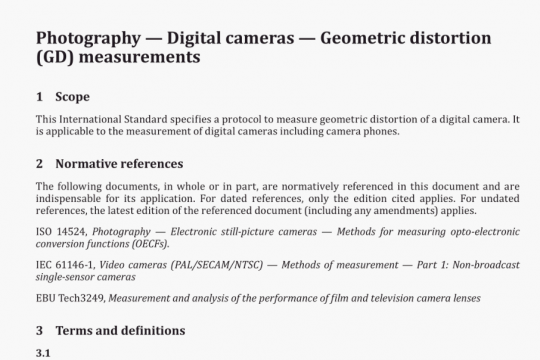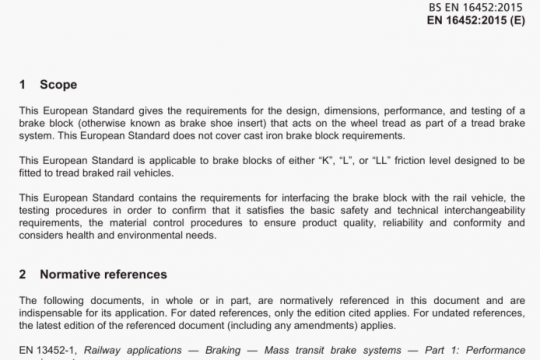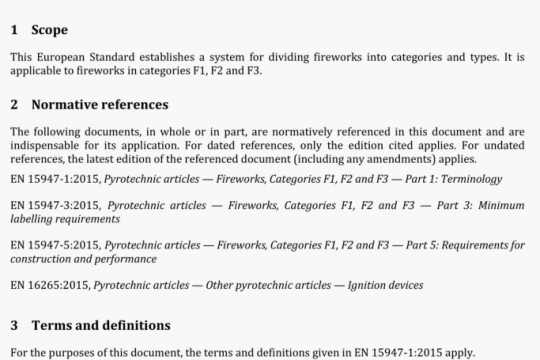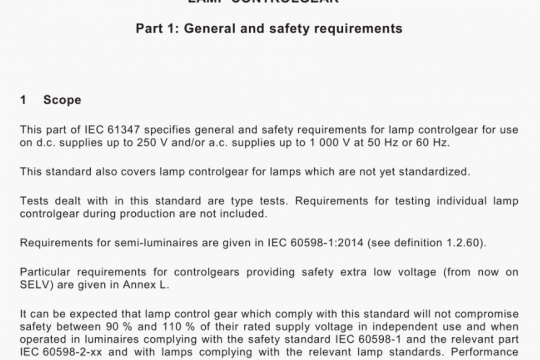BS EN 1034-1:2021 pdf free
BS EN 1034-1:2021 pdf free.Safety of machinery — Safety requirements for the design and construction of paper making and finishing machines Part 1: Common requirements.
4 List of significant hazards
For a list of all the significant hazards as far as they are dealt with in this document, see Annex B, Table B. 1.
5 Safety requirements and/or measures
5.1 General requirements and requirements for safety devices
5.1.1 MachAnery shall comply with the safety requirements and/or protective measures/risk reduction measures of Clause 5. This Clause specifies the types of guards required for paper making and finishing machines.
When required, further specification will be given in the machine-specific parts as listed in Annex A of this document.
In addition, the machine shall be designed according to the principles of EN ISO 12100:2010 for relevant but not significant hazards that are not dealt with in this document.
5.1.2 Safety devices shall comply with the requirements specified in EN ISO 12100:2010.6.3.
Guards shall be designed and selected in accordance with EN ISO 14120:2015. Interlocking devices associated with guards shall be in accordance with EN ISO 14119:2013. Pressure-sensitive protective devices (PSPD) shall be in accordance with the requirements of the applicable parts of the following standards: EN ISO 13856-1:2013, EN ISO 13856-2:20 13, EN ISO 13856-3:2013. Electro-sensitive protective equipment shall be in accordance with all applicable parts of the following standards:
EN 61496-1:2013, EN 61496-2:2013, EN IEC 61496-3:2019, IEC/TR 61496-4:2007, IEC/TS 61496-4-2:2014, IEC/TS 61496-4-3:2015. The specific applications of the electro-sensitive protective equipment shall be in accordance with all the applicable subclauses of EN IEC 62046:2018.
In compliance with EN ISO 14120:2015, signal colours for the guards should not be used.
Fixed guards that have to be removed periodically for maintenance (e.g. the guards on wrapping points of rolls for changing clothing) shall be constructed in such a way that their fixing systems remain attached to the guards or to the machinery when the guards are removed. An example is shown in Figure 11 of
EN ISO 14120:2015.
Where possible, guards should be constructed in such a way that they also protect against ejected or falling materials and objects.
Where possible, guards should be constructed in such a way that they also protect against emissions generated by the machinery, for example against noise.
5.1.3 Movable guards for safeguarding danger points shall be designed as interlocking guards with guard locking or as interlocking guard without guard locking (see 3.5.2 or 3.5 of EN ISO 14120:20 15).
5.1.4 On perimeter fences equipped with interlocking doors, it shall be possible to open the doors from inside the enclosed area at any time so that persons locked-in can escape from the hazard zone.
5.1.5 Nip bars shall be so designed and mounted that they are able to maintain their safeguarding function even under mechanical stresses, vibration and heat. When forces of 1 000 N are applied in the middle, the gap ‘a’ in Figure 3 shall not be wider than 8 mm.
5.2 Safety devices on power transmission elements
Danger points on power transmission elements shall be protected by fixed guards or interlocking guards with or without guard locking. Guards shall be arranged as close to the danger point as possible such as to prevent access from all sides. Where this is not possible, perimeter fences shall be arranged at a safety distance in accordance with EN ISO 13857:2019, Table 2 and Table B.1.
Table 1 of this document shall be taken into account when selecting the proper type of guarding for power transmission elements.BS EN 1034-1 pdf download.




